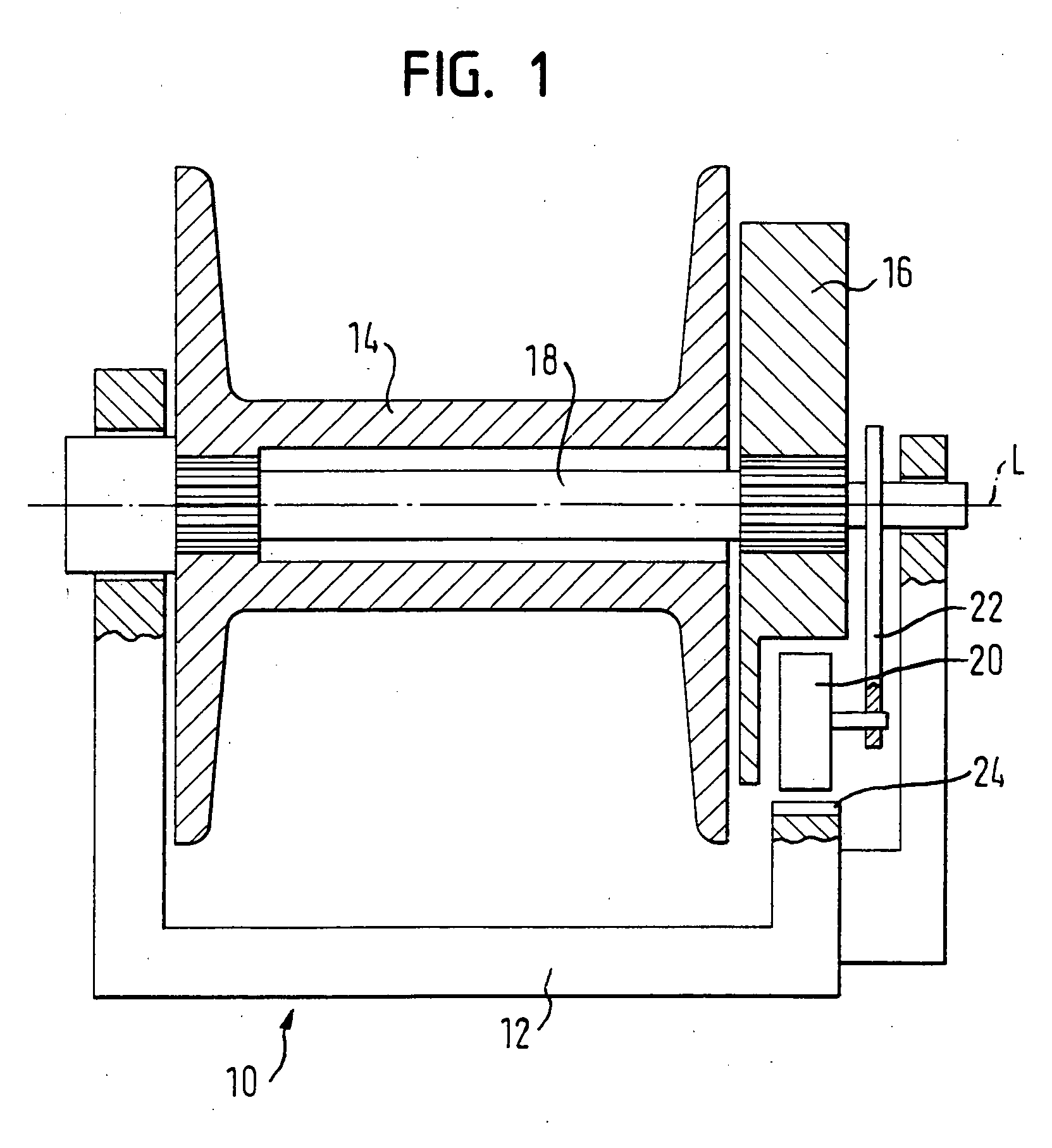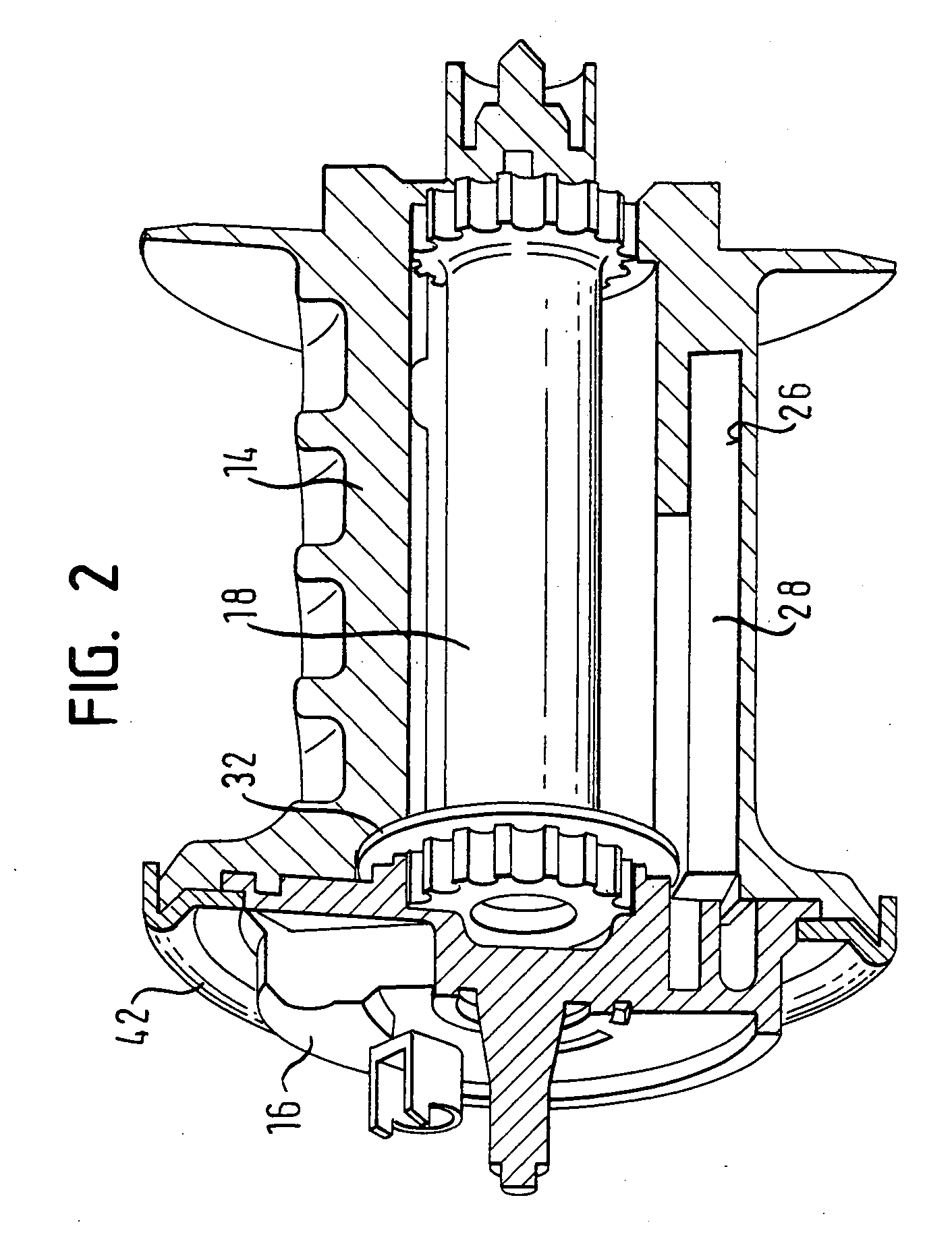Belt retractor for a vehicle safety belt
a technology for vehicle safety and belt retractor, which is applied in the direction of safety belts, vehicular safety arrangments, pedestrian/occupant safety arrangements, etc., can solve the problems of limited relative rotation between the belt spool and the locking disc, and no safety belt can be withdrawn from the belt retractor, so as to achieve the effect of increasing the permissible angle range and increasing strength
- Summary
- Abstract
- Description
- Claims
- Application Information
AI Technical Summary
Benefits of technology
Problems solved by technology
Method used
Image
Examples
first embodiment
[0034] With the aid of FIGS. 2 to 8, the belt retractor is now described. The belt spool 14 is provided with a mounting 26, in which a detent 28 is displaceably arranged. The detent 28 has the form of a pin with a rectangular cross-section (see also FIG. 5) and is provided at an axial end with a cam 30. The detent 28 is displaceably arranged in the mounting 26, the cam 30 being arranged towards the locking disc 16.
[0035] To move the detent 28 between a position of rest which is illustrated in FIGS. 2, 3 and 7, and an operating position which is illustrated in FIGS. 4 and 8, a control ring 32 is used, which is provided with a control link 34. The control link 34 is constructed here as a ramp surface, running obliquely, on a shoulder of the control ring 32, which is bent from the plane of the ring by approximately 90 degrees. The control link 34 therefore acts in axial direction in relation to the control ring.
[0036] The control ring 32 is arranged on the locking disc 16 so as to be ...
sixth embodiment
[0047] In FIGS. 22 to 24, the belt retractor is shown. The difference from the previous embodiment consists in that a stop element 60 is provided, on which the cutting element 52 comes into abutment, after it has carried out just one revolution relative to the belt spool. The stop element 60 is constructed as an insert piece or impression piece of hardened metal, which has such a strength that it can not be cut by the cutting element 52. In FIG. 24, the position of the locking disc 16 with the cutting element 52 can be seen in the initial position. With a relative rotation of the belt spool relative to the locking disc 16, the detent 28 slides from the cutting element 52 (via a transition section 62 formed hereon) onto the end face of the locking disc 16. After dipping into the recess 36, the detent 28 arrives in abutment against the detent surface 38. Thereby, the cutting element 52 is moved. The relative rotation between the belt spool 14 and the locking disc 16 is limited after a...
PUM
 Login to View More
Login to View More Abstract
Description
Claims
Application Information
 Login to View More
Login to View More - R&D
- Intellectual Property
- Life Sciences
- Materials
- Tech Scout
- Unparalleled Data Quality
- Higher Quality Content
- 60% Fewer Hallucinations
Browse by: Latest US Patents, China's latest patents, Technical Efficacy Thesaurus, Application Domain, Technology Topic, Popular Technical Reports.
© 2025 PatSnap. All rights reserved.Legal|Privacy policy|Modern Slavery Act Transparency Statement|Sitemap|About US| Contact US: help@patsnap.com



